Abstract
Firshein, William (Wesleyan University, Middletown, Conn.). Influence of deoxyribonucleic acid degradation products and orthophosphate on deoxynucleotide kinase activity and deoxyribonucleic acid synthesis in pneumococcus type III. J. Bacteriol. 90:327–336. 1965.—An oligodeoxynucleotide fraction derived from a deoxyribonuclease-treated calf-thymus deoxyribonucleic acid (DNA) can enhance the activity of deoxycytidylic acid (dCMP) and deoxyguanylic acid (dGMP) kinases in cell suspensions of type III pneumococci. High levels of orthophosphate can produce similar effects. For part of the incubation period, the activity of dCMP and dGMP kinases is very low or undetectable in unsupplemented-cell suspensions of pneumococci. In contrast, the remaining kinases, deoxyadenylic acid and thymidylic acid, which are present in ample amounts in control and supplemented cells throughout the incubation period, are unaffected by the addition of oligodeoxynucleotides and orthophosphate. The stimulation of kinase activity is amino acid-dependent and can be abolished by adding chloramphenicol. When the oligodeoxynucleotide fraction and orthophosphate are further supplemented with all eight of the naturally occurring deoxynucleosides and deoxynucleotides (which do not affect kinase activity), a preferential enhancement of DNA synthesis occurs in comparison with cell growth or protein synthesis. Addition of deoxynucleosides and deoxynucleotides to unsupplemented cells produces only a slight increase in DNA synthesis. The preferential enhancement of DNA synthesis can be prevented by adding chloramphenicol at a certain time during incubation.
Full text
PDF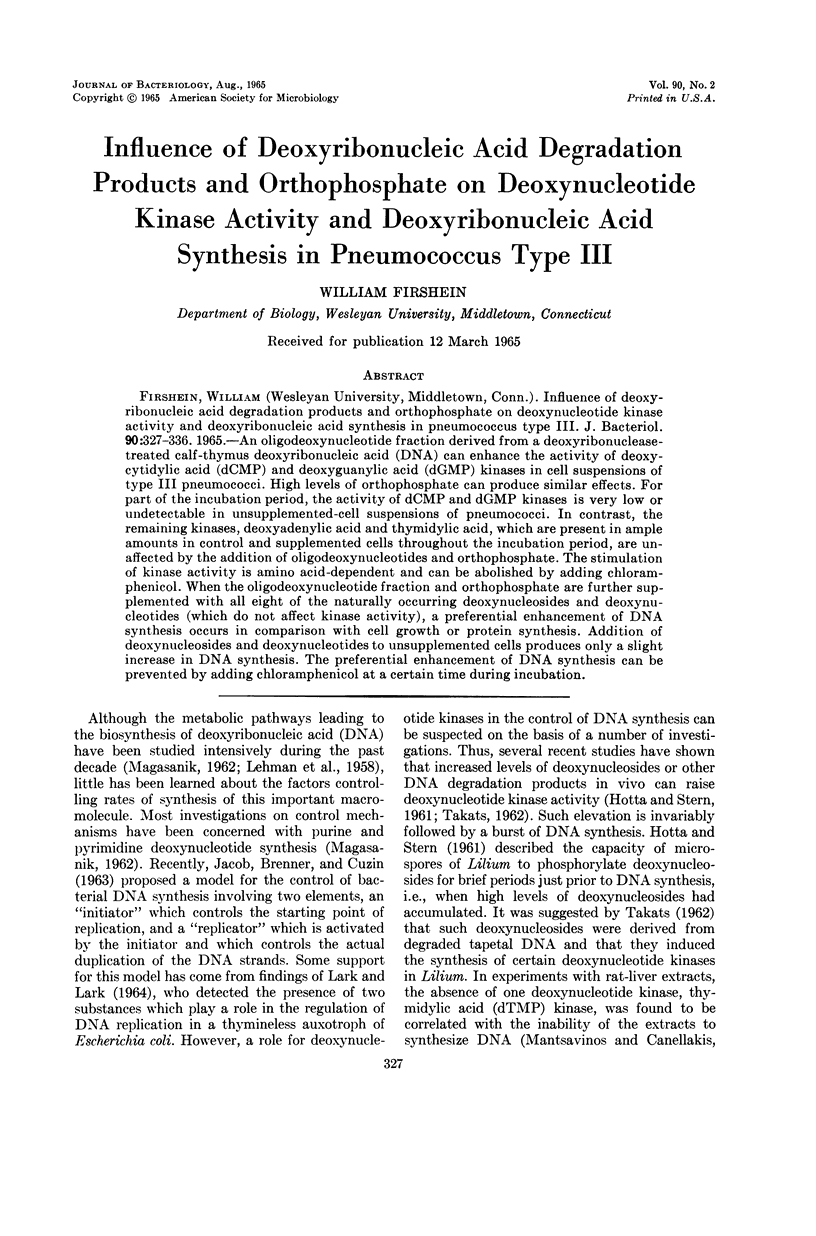
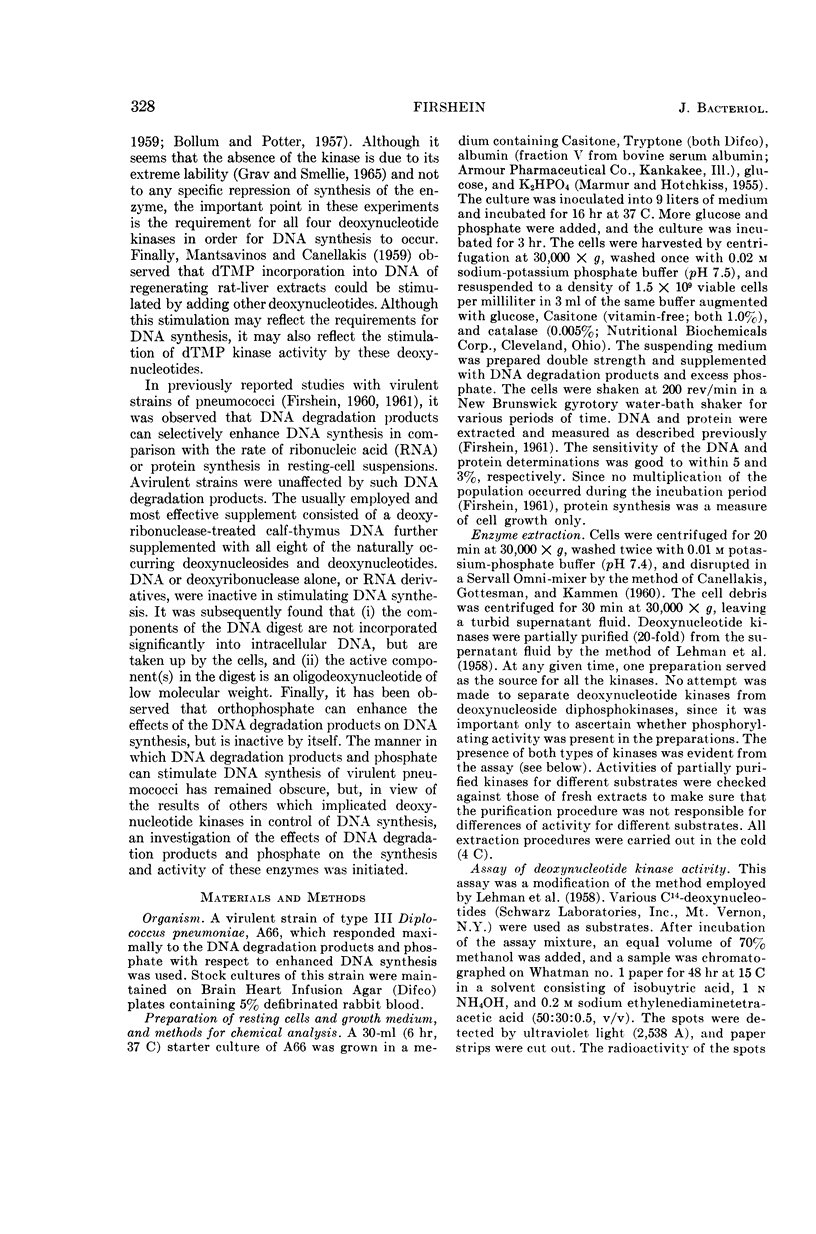
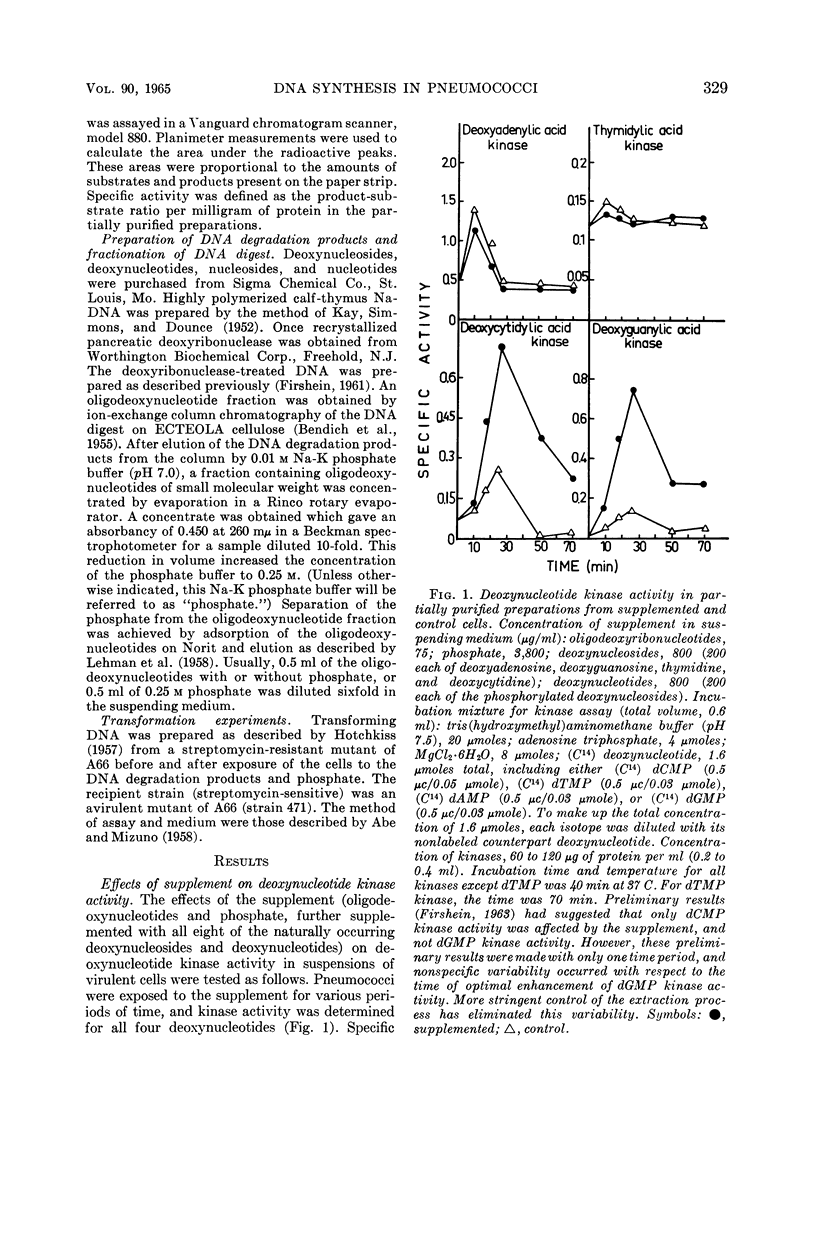
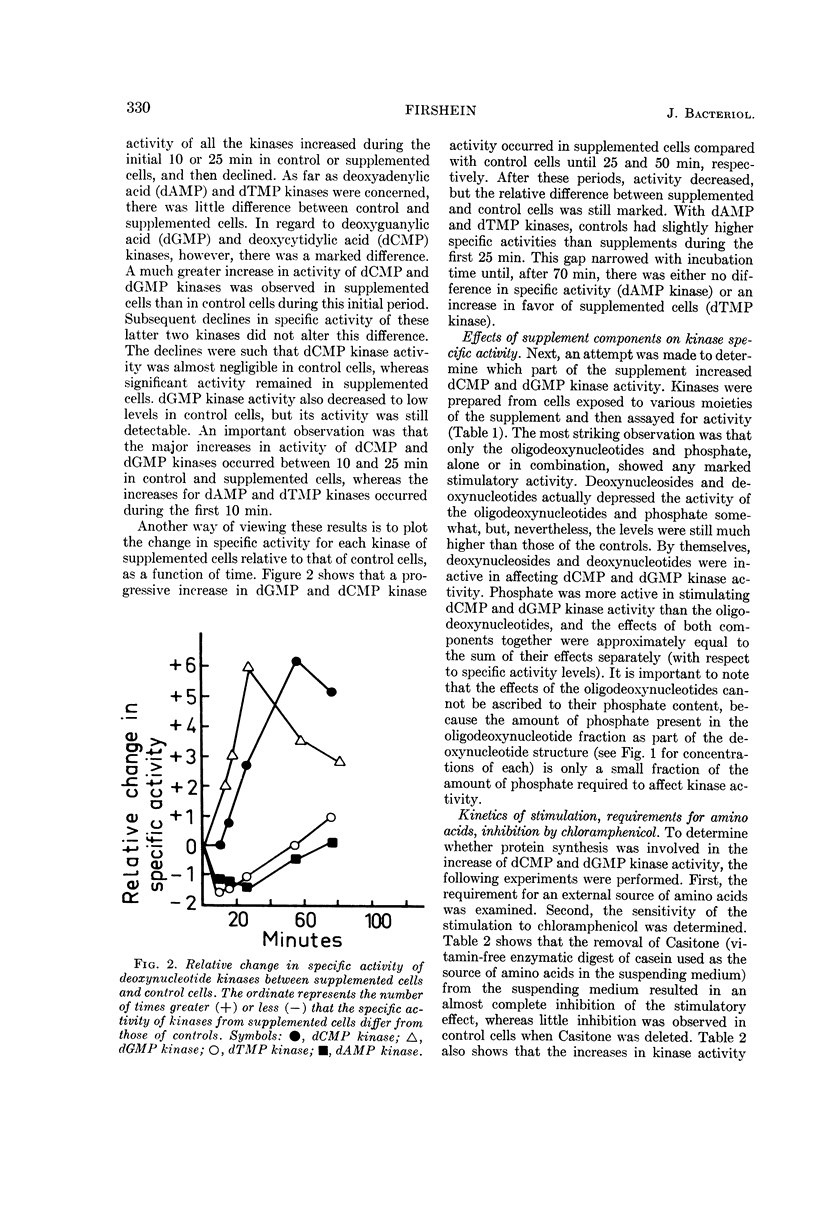
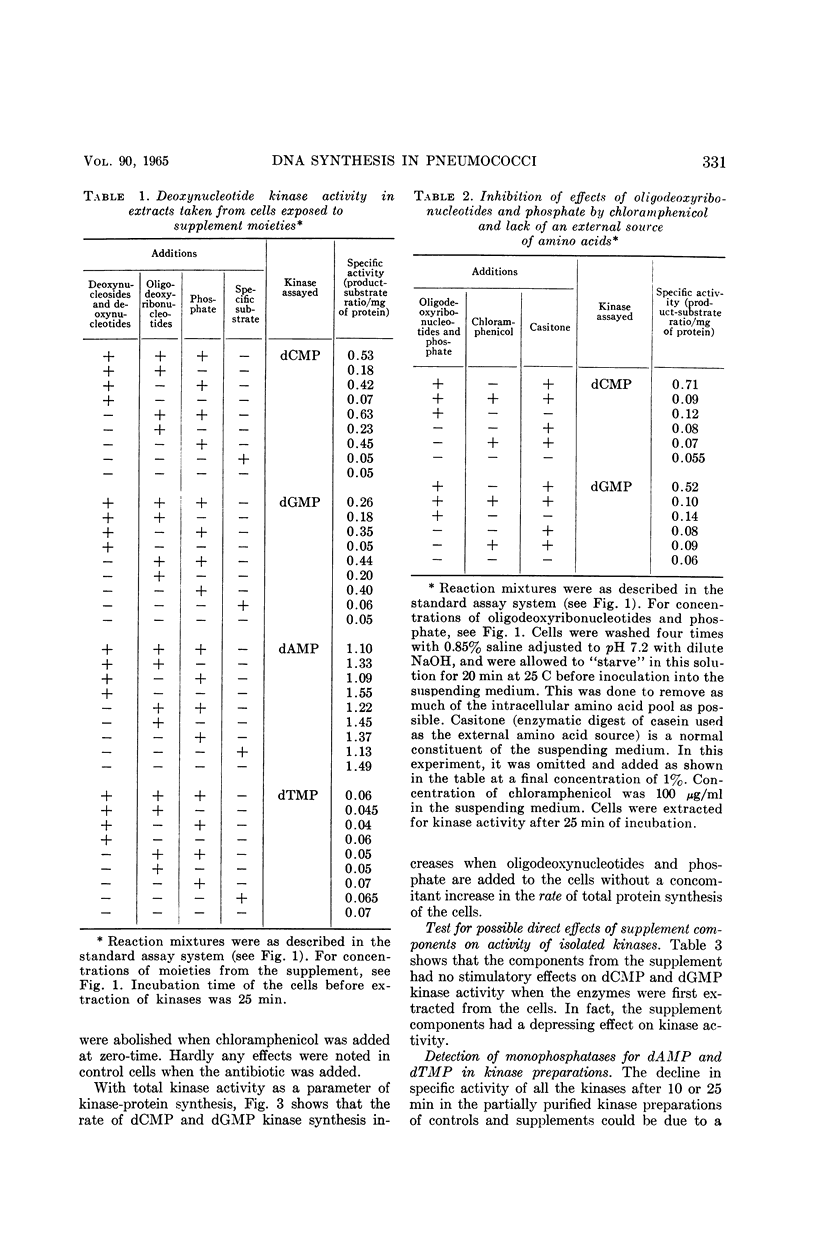
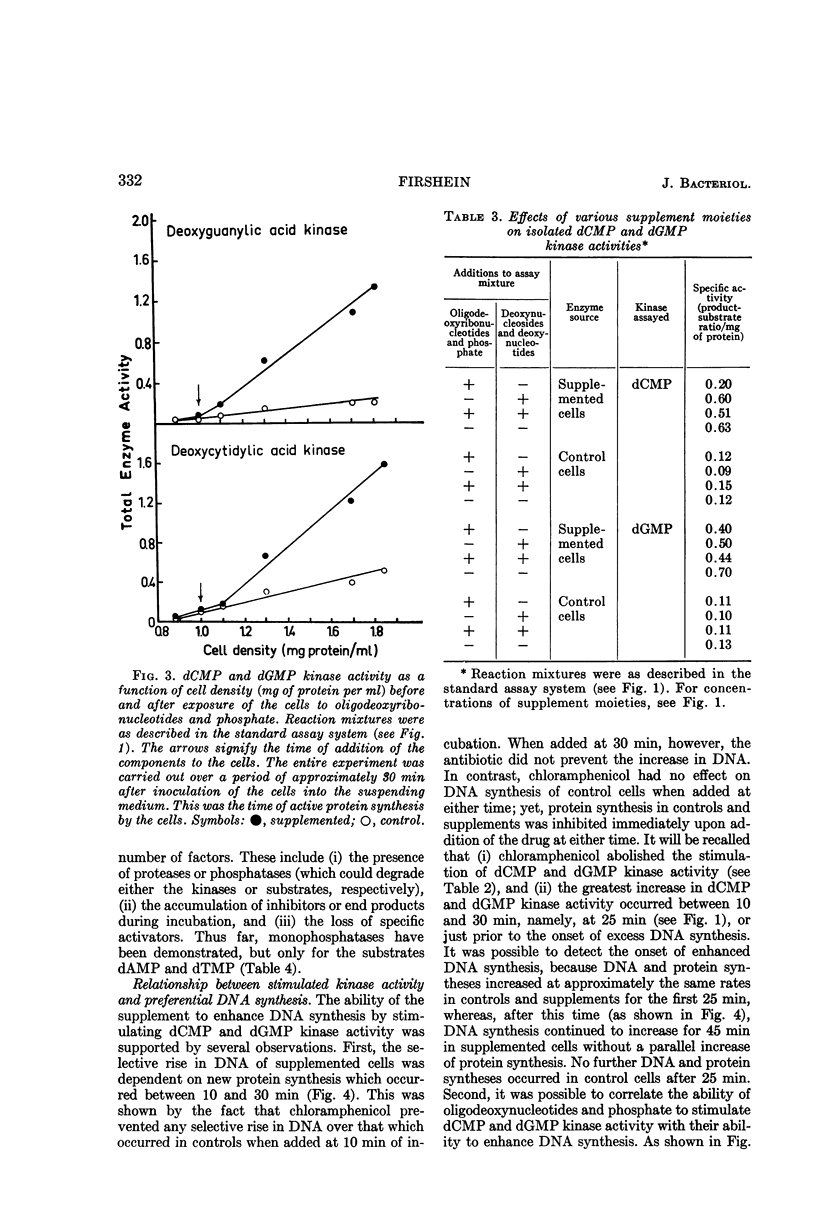
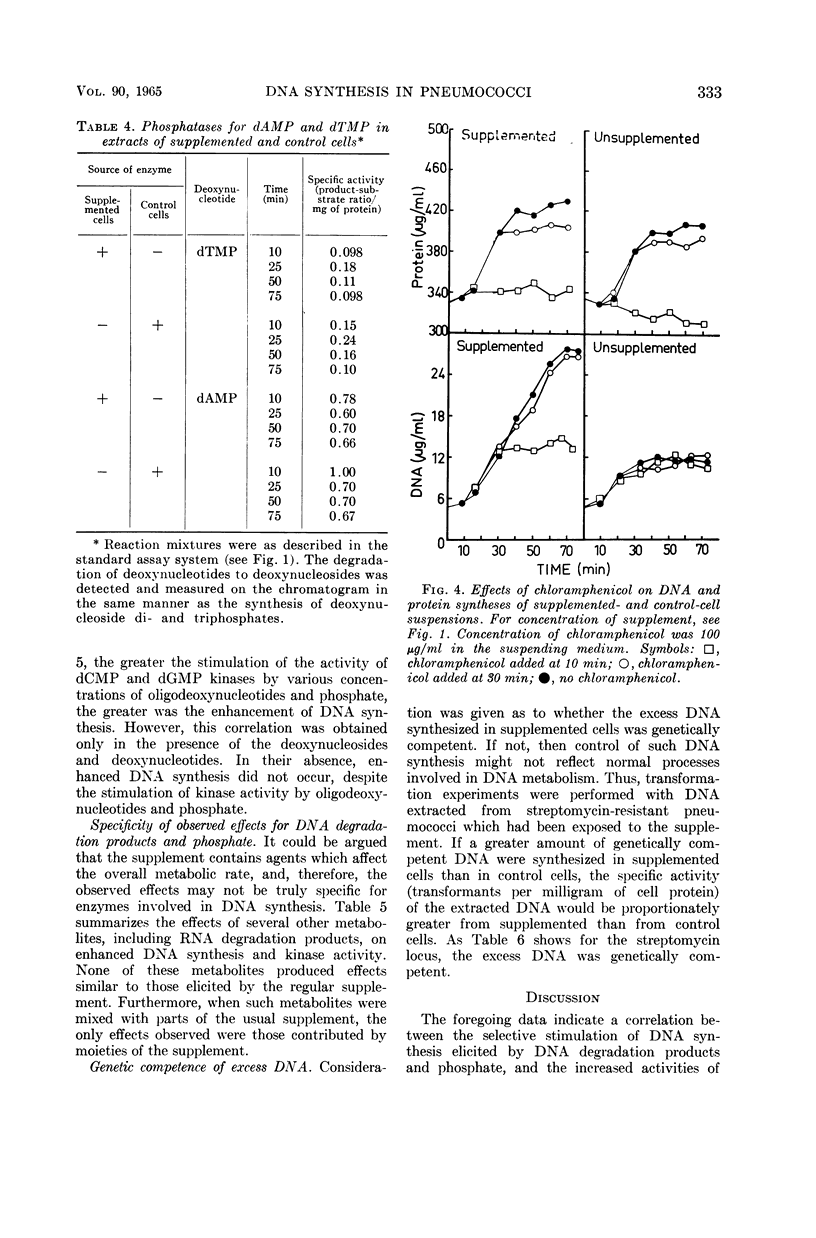
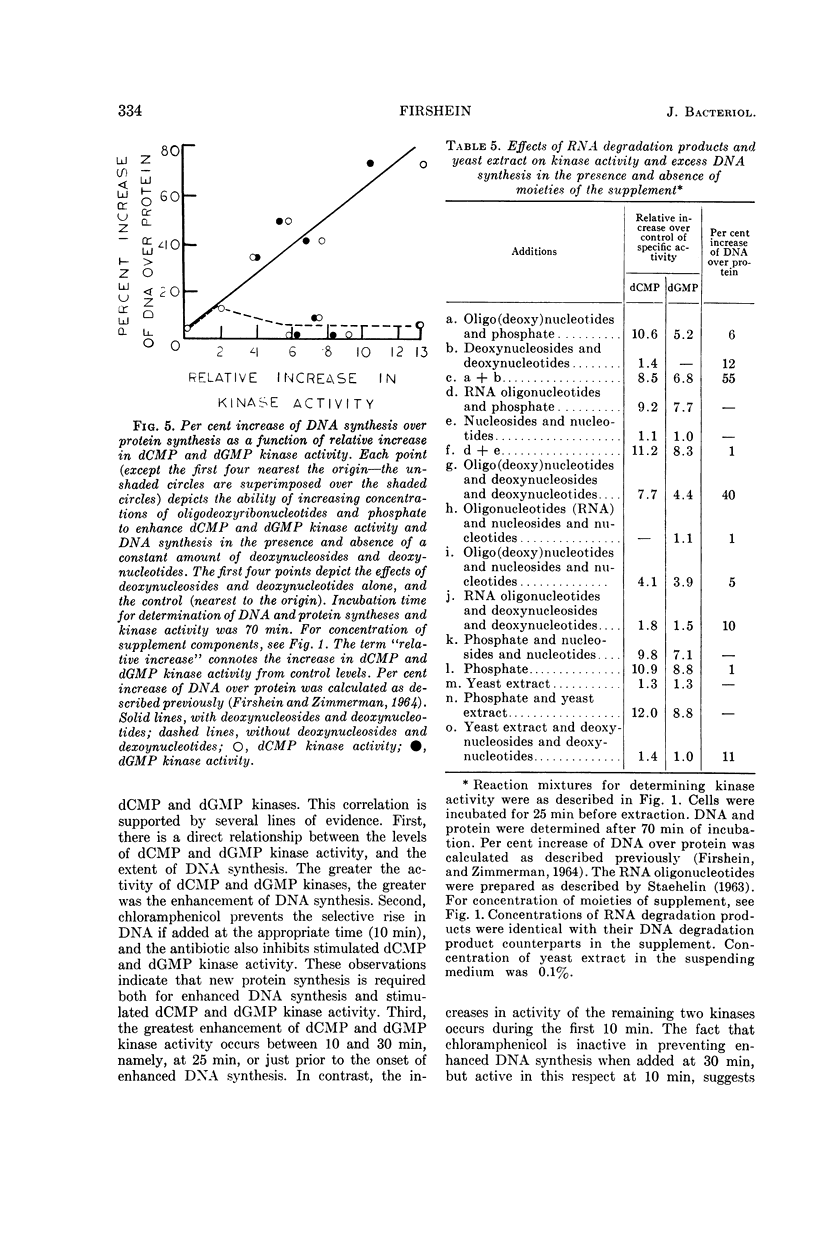
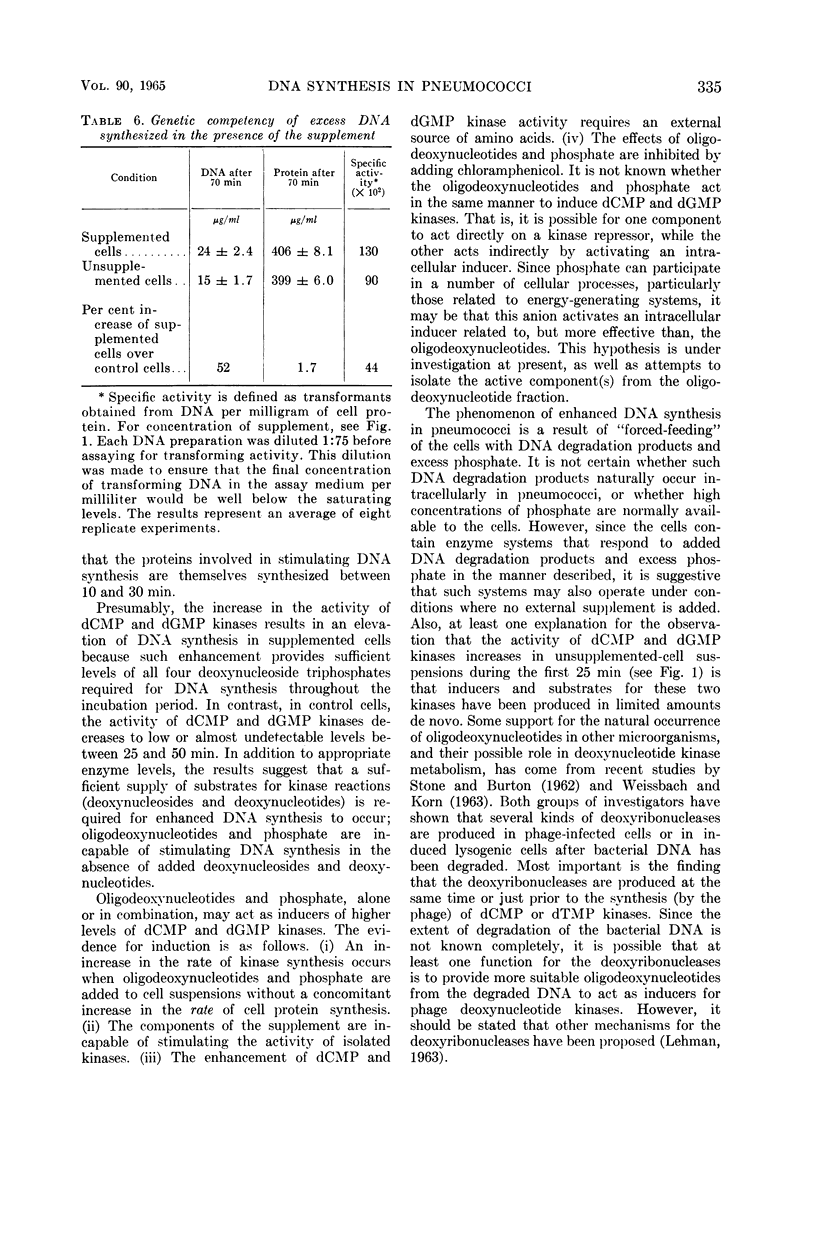
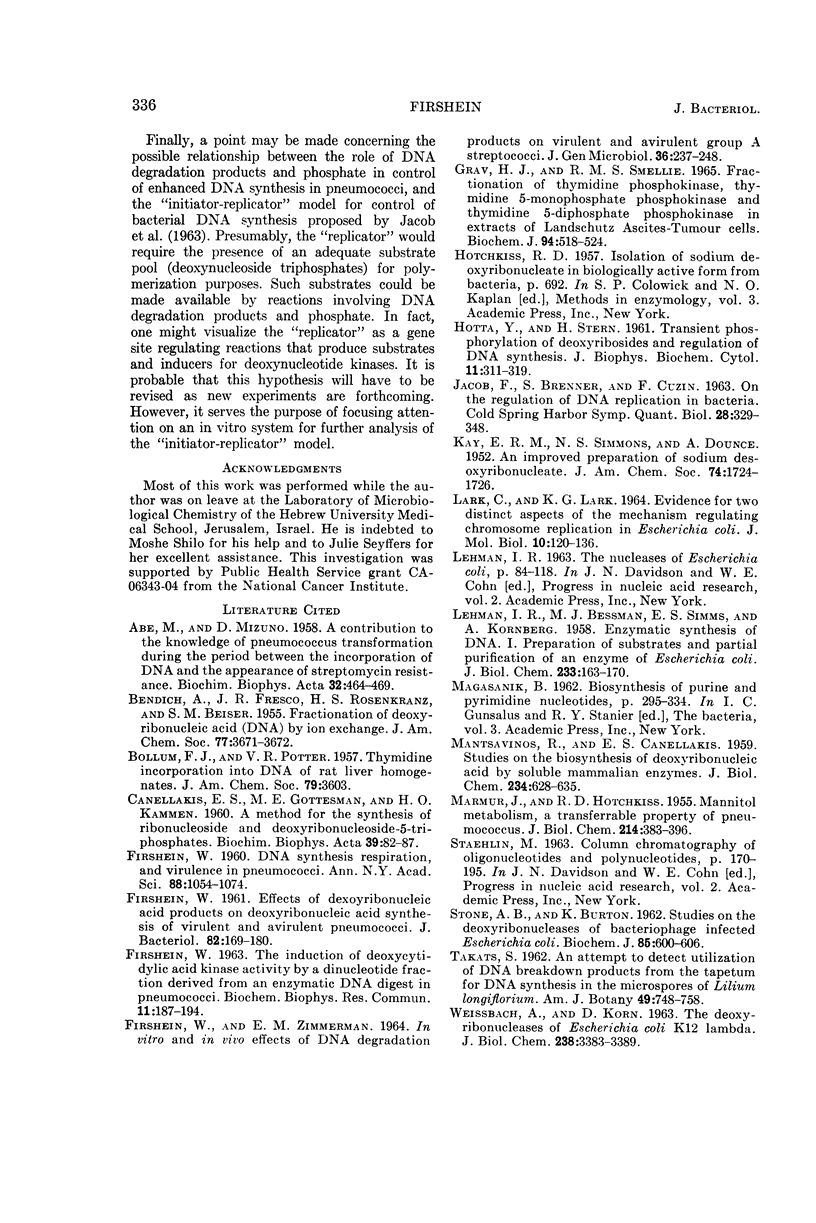
Selected References
These references are in PubMed. This may not be the complete list of references from this article.
- ABE M., MIZUNO D. A contribution to the knowledge of pneumococcus transformation during the period between the incorporation of deoxyribonucleic acid and the appearance of streptomycin resistance. Biochim Biophys Acta. 1959 Apr;32:464–469. doi: 10.1016/0006-3002(59)90620-1. [DOI] [PubMed] [Google Scholar]
- CANELLAKIS E. S., GOTTESMAN M. E., KAMMEN H. O. A method for the synthesis of ribonucleoside and deoxyribonucleoside-5'-triphosphates. Biochim Biophys Acta. 1960 Mar 25;39:82–87. doi: 10.1016/0006-3002(60)90124-4. [DOI] [PubMed] [Google Scholar]
- FIRSHEIN W. DNA synthesis, respiration, and virulence in pneumococci. Ann N Y Acad Sci. 1960 Nov 21;88:1054–1074. doi: 10.1111/j.1749-6632.1960.tb20096.x. [DOI] [PubMed] [Google Scholar]
- FIRSHEIN W. Effects of deoxyribonucleic acid products on deoxyribonucleic acid synthesis of virulent and avirulent pneumococci. J Bacteriol. 1961 Aug;82:169–180. doi: 10.1128/jb.82.2.169-180.1961. [DOI] [PMC free article] [PubMed] [Google Scholar]
- FIRSHEIN W. The induction of deoxycytidylic acid kinase activity by a dinucleotide fraction derived from an enzymatic DNA digest in pneumococci. Biochem Biophys Res Commun. 1963 May 3;11:187–194. doi: 10.1016/0006-291x(63)90332-2. [DOI] [PubMed] [Google Scholar]
- FIRSHEIN W., ZIMMERMAN E. M. IN VITRO AND IN VIVO EFFECTS OF DEOXYRIBONUCLEIC ACID DEGRADATION PRODUCTS ON VIRULENT AND AVIRULENT GROUP A STREPTOCOCCI. J Gen Microbiol. 1964 Aug;36:237–248. doi: 10.1099/00221287-36-2-237. [DOI] [PubMed] [Google Scholar]
- GRAV H. J., SMELLIE R. M. FRACTIONATION OF THYMIDINE PHOSPHOKINASE, THYMIDINE 5'-MONOPHOSPHATE PHOSPHOKINASE AND THYMIDINE 5'-DIPHOSPHATE PHOSPHOKINASE IN EXTRACTS OF LANDSCHUTZ ASCITES-TUMOUR CELLS. Biochem J. 1965 Mar;94:518–524. doi: 10.1042/bj0940518. [DOI] [PMC free article] [PubMed] [Google Scholar]
- HOTTA Y., STERN H. Transient phosphorylation of deoxyribosides and regulation of deoxyribonucleic acid synthesis. J Biophys Biochem Cytol. 1961 Nov;11:311–319. doi: 10.1083/jcb.11.2.311. [DOI] [PMC free article] [PubMed] [Google Scholar]
- LARK C., LARK K. G. EVIDENCE FOR TWO DISTINCT ASPECTS OF THE MECHANISM REGULATING CHROMOSOME REPLICATION IN ESCHERICHIA COLI. J Mol Biol. 1964 Oct;10:120–136. doi: 10.1016/s0022-2836(64)80032-2. [DOI] [PubMed] [Google Scholar]
- LEHMAN I. R., BESSMAN M. J., SIMMS E. S., KORNBERG A. Enzymatic synthesis of deoxyribonucleic acid. I. Preparation of substrates and partial purification of an enzyme from Escherichia coli. J Biol Chem. 1958 Jul;233(1):163–170. [PubMed] [Google Scholar]
- MANTSAVINOS R., CANELLAKIS E. S. Studies on the biosynthesis of deoxyribonucleic acid by soluble mammalian enzymes. J Biol Chem. 1959 Mar;234(3):628–635. [PubMed] [Google Scholar]
- MARMUR J., HOTCHKISS R. D. Mannitol metabolism, a transferable property of pneumococcus. J Biol Chem. 1955 May;214(1):383–396. [PubMed] [Google Scholar]
- STONE A. B., BURTON K. Studies on the deoxyribonucleases of bacteriophage-infected Escherichia coli. Biochem J. 1962 Dec;85:600–606. doi: 10.1042/bj0850600. [DOI] [PMC free article] [PubMed] [Google Scholar]
- WEISSBACH A., KORN D. THE DEOXYRIBONUCLEASES OF ESCHERICHIA COLI K12-LAMBDA. J Biol Chem. 1963 Oct;238:3383–3389. [PubMed] [Google Scholar]


